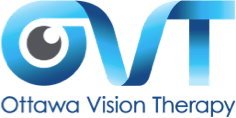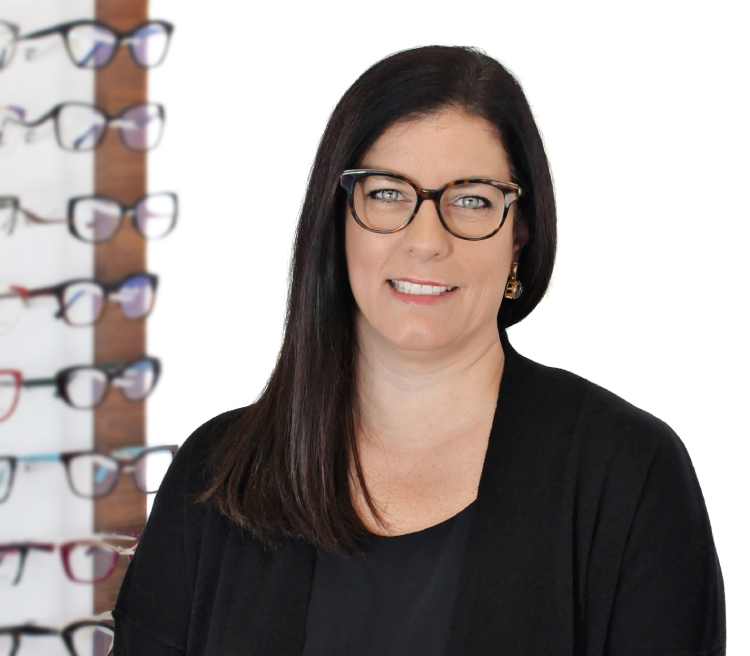Post-concussion eye strain occurs when the communications between your brain and your eyes is disrupted. Vision therapy can treat eye strain after a concussion by using a personalized program of exercises to retrain the connection between your brain and your eyes. This helps you regain comfort and clarity in your daily life.
Why Your Eyes Feel Strained After a Concussion
A concussion affects how your brain processes information, including visual information from your eyes. Even if your eyes are healthy, injury can make it hard for them to work together as a team with your brain.
The resulting breakdown in communication leads to symptoms that feel like your eyes are working overtime. It’s a common challenge for many patients recovering from a brain injury.
Common Vision Problems After a Brain Injury
Common symptoms following a brain injury include:
- Blurred or double vision
- Headaches or eye pain with visual tasks
- Sensitivity to light and screens
- Trouble to focus or shift your gaze
- Difficulty with balance and depth perception
- Words appear to move or jumble when you read
- Feeling overwhelmed in busy places like grocery stores
What Vision Therapy Does for Concussion Recovery
Vision therapy is an active form of treatment designed to rebuild and strengthen the connection between your brain and your eyes. Here’s how it works.
Retrain Eye Teaming & Focus
A concussion can weaken your eyes’ ability to work together—a skill called eye teaming. Vision Therapy helps your eyes learn to aim and focus on the same point at the same time. This can reduce double vision and headaches.
Improve Eye Track & Coordination
From reading a line of text to following a moving object, your eyes need to track smoothly. Vision therapy exercises help restore accurate and efficient eye movements. This can improve your concentration and reduce fatigue during near work.
Reduce Light & Motion Sensitivity
Feeling dizzy or nauseous from scrolling on a phone or walking through a busy mall is common after a concussion. Vision Therapy helps your brain better process motion and adapt to different light levels. This can make these situations more tolerable.
What to Expect from a Vision Therapy Program
Your journey with vision therapy starts with a thorough assessment to identify the visual skills affected by your concussion. Based on the results, we’ll develop a personalized treatment to help you retrain your eyes.
The Comprehensive Vision Evaluation
As part of your assessment, we will will check skills like:
- How your eyes move, focus, and work together
- Your depth perception and peripheral vision
- How well your brain processes what you see
- Your visual stamina for tasks like reading or computer use
Personalized In-Office Sessions
Typically, you will attend weekly sessions where you work one-on-one with a therapist. These sessions use targeted tools and activities like therapeutic lenses, prisms, and computer-based exercises to rebuild your visual skills in a structured way.
At-Home Activities to Support Progress
You’ll also receive a set of exercises to do at home. These activities reinforce what you learn in your office sessions and can help speed up your recovery. Consistency is an important part of making progress.

How Long Does Eye Strain Last After a Concussion?
For some people, vision problems may resolve on their own within a few weeks. For others, symptoms can linger for months or longer, impacting work, school, and quality of life. If you still have symptoms after a few weeks, it may be time to book a comprehensive assessment.
The length of a vision therapy program varies for each person—it depends on your specific symptoms and goals. Many people begin to notice improvements within the first few weeks of consistent therapy.
We work with you at your own pace to help you reach your recovery goals.
Simple Ways to Help Eye Strain at Home
While vision therapy provides a direct way to treat concussion symptoms, simple adjustments can help you manage symptoms day-to-day. These strategies can offer temporary relief. They can make visual tasks less difficult as you recover.
Take Frequent Breaks
When you work on a screen or read, try following the 20-20-20 rule. Every 20 minutes, take a 20-second break to look at something at least 20 feet away. This gives your focusing muscles a chance to relax.
Adjust Your Screen Settings
Increase the font size on your computer and phone to make text easier to read. You can also use text-to-speech tools to listen to long documents or emails. This reduces the demand on your visual system.
Use Strategic Light
Wear a hat with a brim indoors to block harsh overhead fluorescent lights. Outside, wear sunglasses to reduce glare. Try to avoid wearing sunglasses indoors, as doing so can sometimes make light sensitivity worse over time.
If you or your child continue to struggle with eye strain after a concussion, you’re not out of options. Retraining your visual system can make a significant difference in your recovery and help you feel more like yourself again.
Our team at Ottawa Vision Therapy is ready to work with you and develop a plan to improve your visual abilities. Book an appointment with us today.




